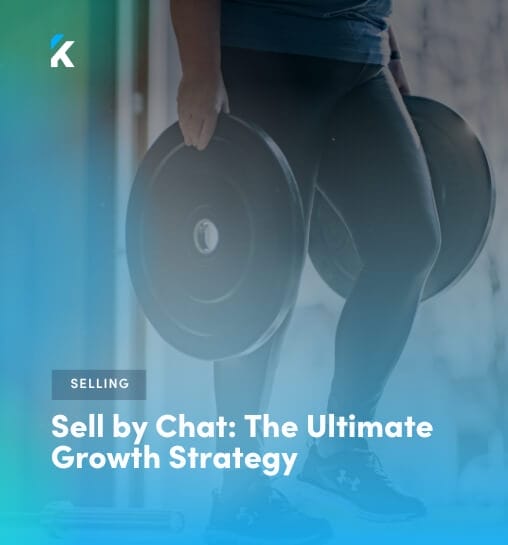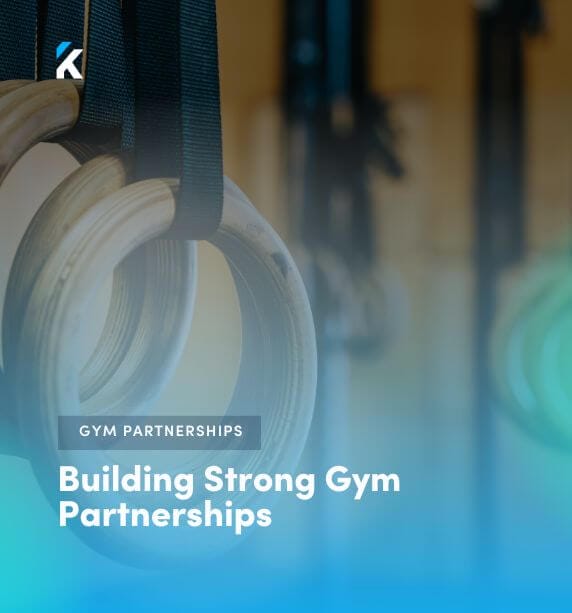GLM and SEO for Fitness Businesses
AMRAP, WOD, SEO?
SEO isn’t a workout term—but it’s definitely hard work, and it’s important to the success of your gym.
SEO stands for “search engine optimization,” and it refers to everything a company can do to get large amounts of the right people to its website without paying for ads. This “organic traffic” is earned not with advertising dollars but through great content, technical website elements and best-practice strategies for publishing.
In short, you’ll never know exactly how Google determines which sites land at the top of Page 1. Search engines are notoriously secretive about their algorithms. But you can do a lot of stuff that will increase your chances of climbing search engine results pages, aka SERPs.
Why is SEO important? Simple, people can’t buy your services if they can’t find you.
And remember this: According to a 2020 Sistrix report, the No. 1 organic result of a Google search gets 28.5 percent of the clicks. Entries two and three get 15.7 and 11 percent of the clicks, respectively. No. 10? Only 2.5 percent. You can image what the rates are for Page 2 results.
It’s time for gym owners to flex some SEO muscle—and Gym Lead Machine can help you get a head start.
A Word About SEO Consultants
SEO is a big-money game.
Imagine what would happen if someone searched for “fitness” and your page was No. 1. To get there, you’d have to beat fitnessblender.com, apple.com and health.com—true heavyweights.
With that kind of exposure on the line, SEO consultants charge huge dollars. Some cost $400 an hour and agencies can run you over $10,000 a month. They’ll assist with content creation and publishing strategies, link building, citations, blog post optimization, keyword research, technical website issues, and so on. But even the best consultant can’t guarantee Google will give you that golden No. 1 spot.
Most gym owners can’t spend $400 an hour for an exhaustive SEO strategy created by a big player. But don’t be disheartened. You can make a lot of headway with some simple strategies and a cutting-edge GLM website that’s constantly updated to reflect best practices for SEO in the world of microgyms, boutiques, studios and CrossFit affiliates.
SEO for Gyms: What Google Wants

Google doesn’t publish a checklist and award the No. 1 ranking to the company that ticks off every box. And its ranking system is complex. Former Google CEO Eric Schmidt said that more than 200 different elements contribute to a site’s ranking.
Google also doesn’t want everyone to know exactly how rankings are determined so people can’t game the system. Cheaters have definitely scored short-term victories in the past. For example, keyword stuffing, or repeatedly cramming popular search terms into useless articles, once fed traffic to a site. But Google caught on and changed its algorithm, and that strategy doesn’t work anymore.
Other “black-hat” SEO strategies include cloaking (showing users and search engines different content), unethical redirects, link farms and a host of devious tactics that go against Google’s guidelines.
Do these tactics work? Sometimes. And only briefly. Once Google figures out the scam—and Google will—there are penalties. You don’t want to be on Google’s bad side.
Google is always updating its algorithm—Panda, Penguin and Hummingbird are a few of the named updates rolled out over the years—and you can’t fool the company for long.
Best advice: Never use black-hat techniques.
White-hat SEO is the answer. This is making your site as attractive as possible to searchers and search engines, all while staying onside of search engines’ terms of service.
Here are a few things we know Google likes.
On-Page SEO
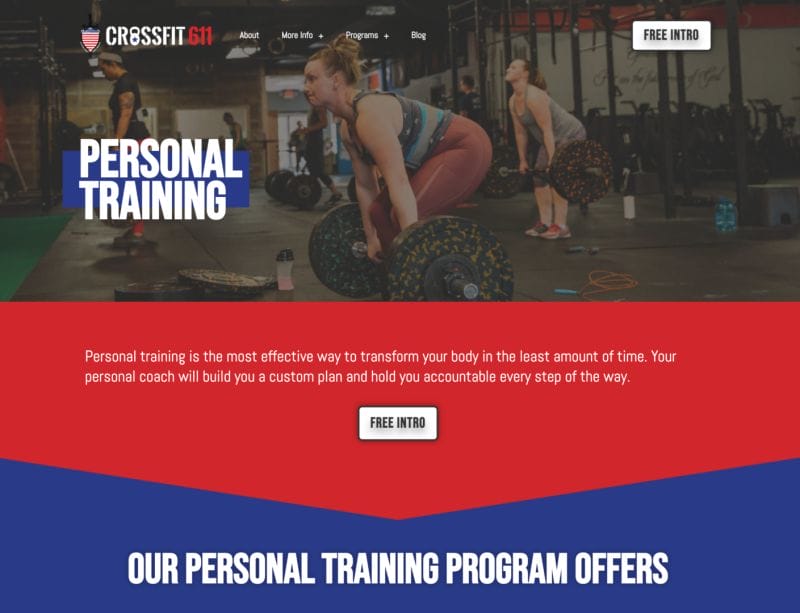
– Great content. Google wants its users to find what they need fast. And if you provide what they need, Google will send them your way in droves. In the world of organic SEO, everyone agrees that content is king. There are some tricks to content as well. Do some research and see if any resources on a topic are missing, incomplete or flat-out bad. Then create something better on your site. We’ve seen more than a few instances of gym owners who researched keywords that returned few or poor results. When they supplied great resources and published them on GLM sites, they jumped onto No. 1 on Google Page 1, and some of them get large amounts of organic traffic from just one or two key posts.
– Great content also reduces bounce rates and increases the time a visitor spends on your site. These are important SEO factors. Bad content sends people running, and Google notices.
– Site responsiveness. Sites that load fast and look good on desktop, mobile devices and tablets please users—and Google. It’s 2021. No one wants to pinch and scroll through tiny text on a bad website. Users who visit a site and and leave quickly tell Google “this site sucks.”
– Site age. Having a site that’s been around for a long time won’t guarantee you traffic. But a fully optimized, longstanding site packed with great content and rich in backlinks? That’s a winner.
– Site speed. People are not patient. If they click and have to wait more than 1-2 seconds, they’ll back out and pick another site. Google knows this, so slow sites are definitely not going to get you on Page 1. (Note: Speed isn’t everything! We’ll cover site speed for gym owners in more detail below.)
– Metadata. SEO people will tell you metadata doesn’t drive people to your site. But it does perform a critical task: It supplies snippets of text that tell search engines what’s on a web page. Concise, accurate metadata that uses the right keywords is essential. This metadata can also be critical to “local SEO” (see below).
– Images. Huge blocks of text are boring. Images make things more attractive and improve the user experience (UX). Original images are better than stock images, and they should be optimized to avoid slowing down the site—strip out that Exif data with ImageOptim or a similar app. Descriptive file names and appropriate formats are also key, as are captions and alt text.
– Keywords. These words or phrases help search engines direct people to the content on your site. And there is most definitely a “language of keywords.” It’s not enough to make up your own keywords. You’d be better to find out which ones people are searching for and select the ones that apply to your site.
– URLs. Concise, simple URLs are better than 200-character monsters. And “semantically accurate” URLs that describe the content of the page are a huge bonus. Would you click Example.com/asdflh-jasdk-34 or Example.com/best-SEO-practices?
Off-Page SEO

– Backlinks. These are links from another site to your content. More are better, but quality is also important. A link from a website with high domain authority tells Google that you are legit. If a trusted website links to your content, you’re going to see more traffic. If all your links come from poor sites and link farms, you can expect to be put out to pasture.
– Social media. Posts that do well on social media are thought to receive a short-term ratings boost. But Facebook, Twitter and YouTube audiences are fickle, so it would be silly to rely solely on social media for SEO. Promote your content on social media, but don’t expect a few Instagram posts to dramatically change your ranking forever.
– Click-through rates. If people see your site in SERPs and click on it regularly, then spend time on your site as they interact with great content, expect a boost in ranking. If they don’t click or click out right away, expect to drop like a stone.
– Google My Business. From Google itself: “You may find that your business doesn’t show up for relevant searches in your area. To maximize how often users find your business in local search results, ensure that your business information in Google My Business is accurate, complete, and engaging.” If that doesn’t convince you to work on your Google My Business account, nothing will.
What’s the Difference Between SEO and Local SEO?
SEO and local SEO are slightly different. If you’re competing on a national or global scale, you’re in the SEO game.
For example, no one Googles “Coke near me” or “best soda in Miami.” Coke, Pepsi, Ford, Amazon and so on are all playing at the high-stakes table.
For smaller businesses—especially gyms, microgyms, Two-Brain Business clients—local SEO is much more important. Few CrossFit affiliates or boutique studios have a national or international presence. They rely on training in a physical location, though some gyms do remote programming and others operate online only due to COVID-19 restrictions. With that in mind, they need to attract local people who are typing “best gym in Houston” and “get fit New York.”
Local SEO has different best practices than straight-up SEO, and we’ll lay out a few of the big ones here.

As mentioned above, Google My Business is key. Your goal should be to get into the “snack pack” or “local pack,” which are the SEO terms for the top three results featured when someone searches “San Francisco gym” or something similar.
For a definitive guide to setting up and optimizing Google My Business, check out this great article on semrush.com.
In short, you want to accurately fill out as many aspects of Google My Business as you can. Some of this info will make it into the Google “knowledge panel.” That’s the box on the right side of the results page—Google uses it to present key info when someone searches for your business name.
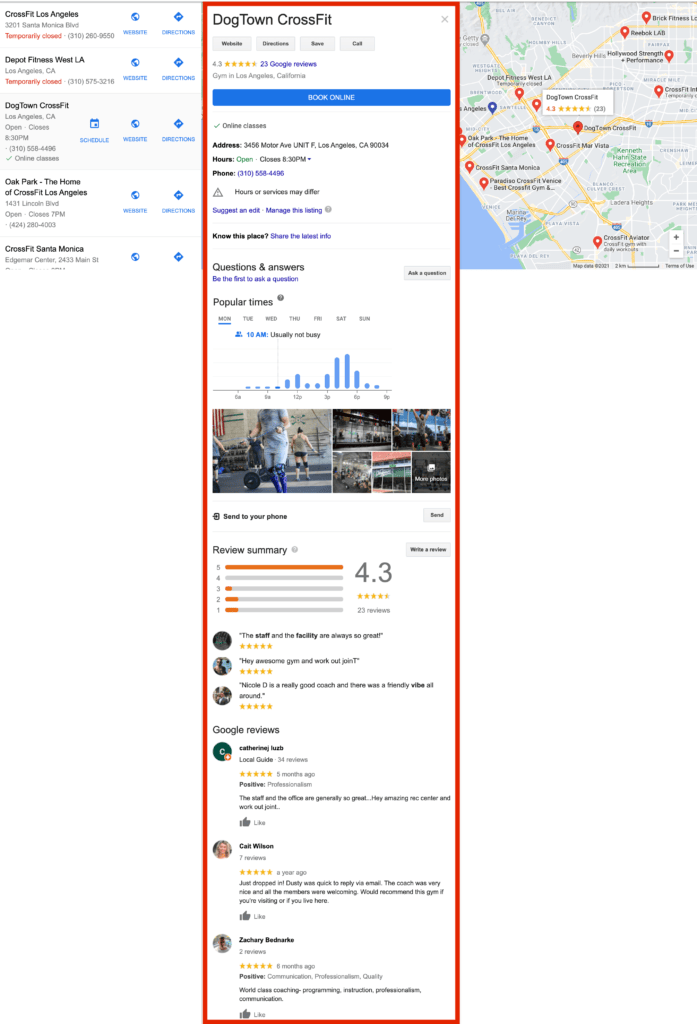
Another critical factor: lots of positive reviews from happy local customers on Google, Yelp, Facebook, and so on.
You’ll also want a location or “about” page that emphasizes local elements: “We’ve been a fixture on Smith Street in Dallas for eight years.”
And, of course, content remains king. In this case, great local content would be considered the emperor. You’ll want to fill your site with local keywords and create content around local events or stories. Think, for example, of a well-written article about the best way to train for the “5-km fun run in Portland, Oregon.” Bonus points if these articles generate links from prominent, well-respected local sites.
Here’s an example of great local content published on a GLM site to answer a local question and promote online fitness services: “Winnipeg Business Closures.”
Site Speed: Not King

At this point, it should be clear that site speed in just one of a huge number of elements that contribute to SEO. It’s important but not all-important. A sluggish site that takes 30 seconds to load? Too slow. But fixating on site speed can be like splitting hairs.
Here’s why: Site speed is sometimes very much in the eye of the beholder. Not all site speed tests are created equal. Some use real-world data, while others offer “best guesses” that really don’t offer any info at all. Similarly, browser add-ons and extensions can affect the results, and cached data can change the loading speed, giving you different results if you’re visiting a site for the first or second time.
Site loading times are also dependent on factors that have little to do with the site itself. For example, if you load a webpage on an iPhone 5 from a farm field in Ohio, you’ll get a different result than if you hit the same page on the latest mobile device while standing next to a router with a high-speed internet connection. Some hardware simply can’t handle the speeds of modern networks, and some areas have very poor coverage.
Finally, the way the sites analyze results changes from day to day and month to month, so you might receive a different score even if nothing on your site changed.
GLM sites, of course, are designed to be fast on mobile, tablet and desktop. That’s accomplished with minimal plug-ins—which also increases security—and reduced logo sizes. One of the plug-ins we do use is SMUSH, which will compress images for you, and our sites employ “lazy load” to prioritize loading of the parts of the screen a viewer is looking at. And we’re always making improvements to ensure we’re giving you the speed needed to please the SEO gods.
For speed tests, we recommend webpagetest.org. But we don’t recommend you pin all your hopes on site speed. Here’s why: top-ranking sites aren’t always the fastest sites.
For example, we Googled “CrossFit in Dallas,” “CrossFit in Los Angeles” and many other similar terms. The No. 1 sites don’t have off-the-charts speed ratings. In fact, their speeds aren’t that great. But they’re still the top sites. That’s proof that site speed is not the be all and end all when it comes to SEO. A fast site without great content won’t dominate the SERPs.
Overall, you’d be unwise to obsess over site speed alone when there are so many other elements that go into SEO.
If you’re using a GLM site and get a slow speed rating, please contact our support team. Our experts are constantly making updates, and we might be able to optimize your site if it’s more than six months old.
Here are the speed results for GLM’s templates:
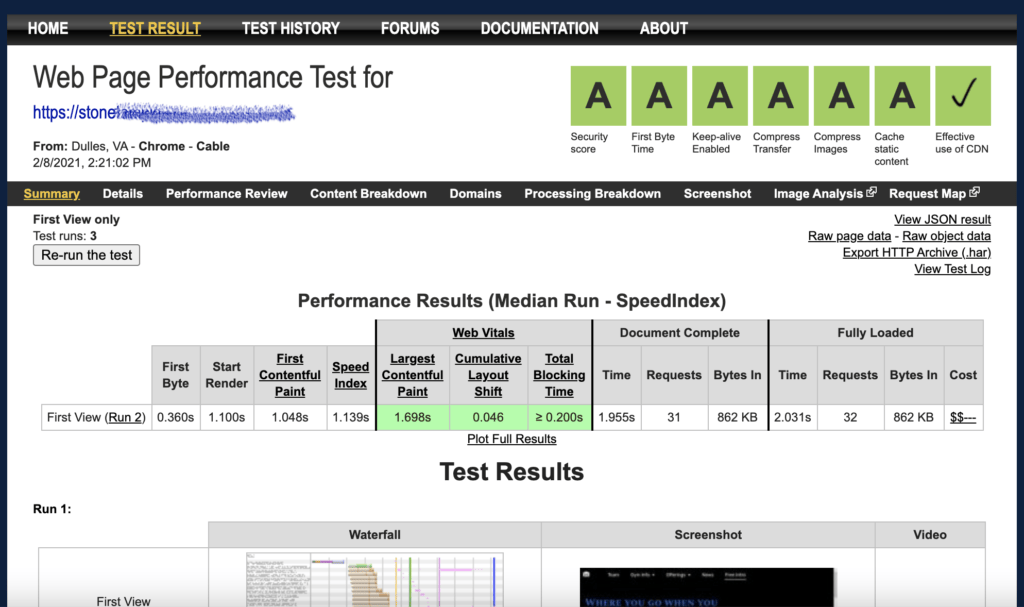


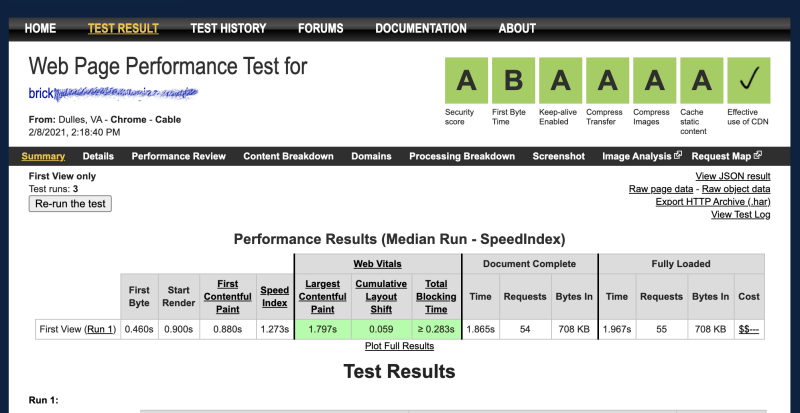

GLM and SEO
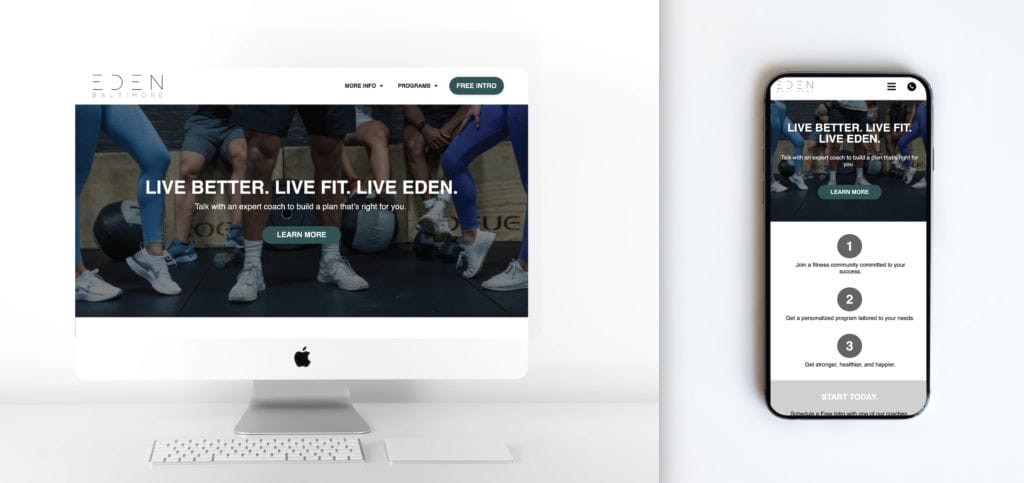
We told you our sites are fast—so what other general SEO features does GLM provide?
First, we’re optimized for mobile. GLM sites aren’t one-size-fits all platforms that are crammed into tablets and phones. We have entirely different formats for all devices so your site will look great whether a person is using a laptop, an iPad or an Android. Google notices, and appreciates this.
All the core pages on your site will have a meta description optimized for local SEO, including gym name, location and page offering. Remember, you’re competing predominantly for local traffic, so our sites have descriptions similar to this: “Work out. Get Fit. Be Happy. Learn more about GLM Gym in Jupiter, Florida. We’ll help you make a plan to hit your health and fitness goals.” Most of our pages are also tagged with your gym name.
Finally, we’ve got written testimonials in prominent locations. This “social proof” is critically important, and we put it front and center.
This is the head start you need to start climbing the Google rankings. Remember: Content is king. Our sites are sports cars waiting for high-octane fuel, so fill the tank with content.
While we don’t offer a full-stack SEO plan right now, we can absolutely help you out if you want to update copy, alter meta descriptions, add keywords or share your XML site map—all for free. Just contact us and let us know exactly what you want.
Gym Owners and SEO: Do the Work, Reap the Reward
Don’t worry if SEO has your head spinning. Rest assured, we’ve provided the basics on your website already.
Your job: Fill your site with great content that solves problems and answers questions for local people. Use great images and captions. Fill out all the fields in Google My Business and use the platform’s features—such as the ability to post offers and photos. Get great reviews and testimonials. Link to great content and network with others to create legitimate, high-quality backlinks.
Get to work and start climbing toward No. 1 on Google. Then get ready to respond to a lot of leads.
Additional reading: “Our Guide to the Best Gym Website Design”



